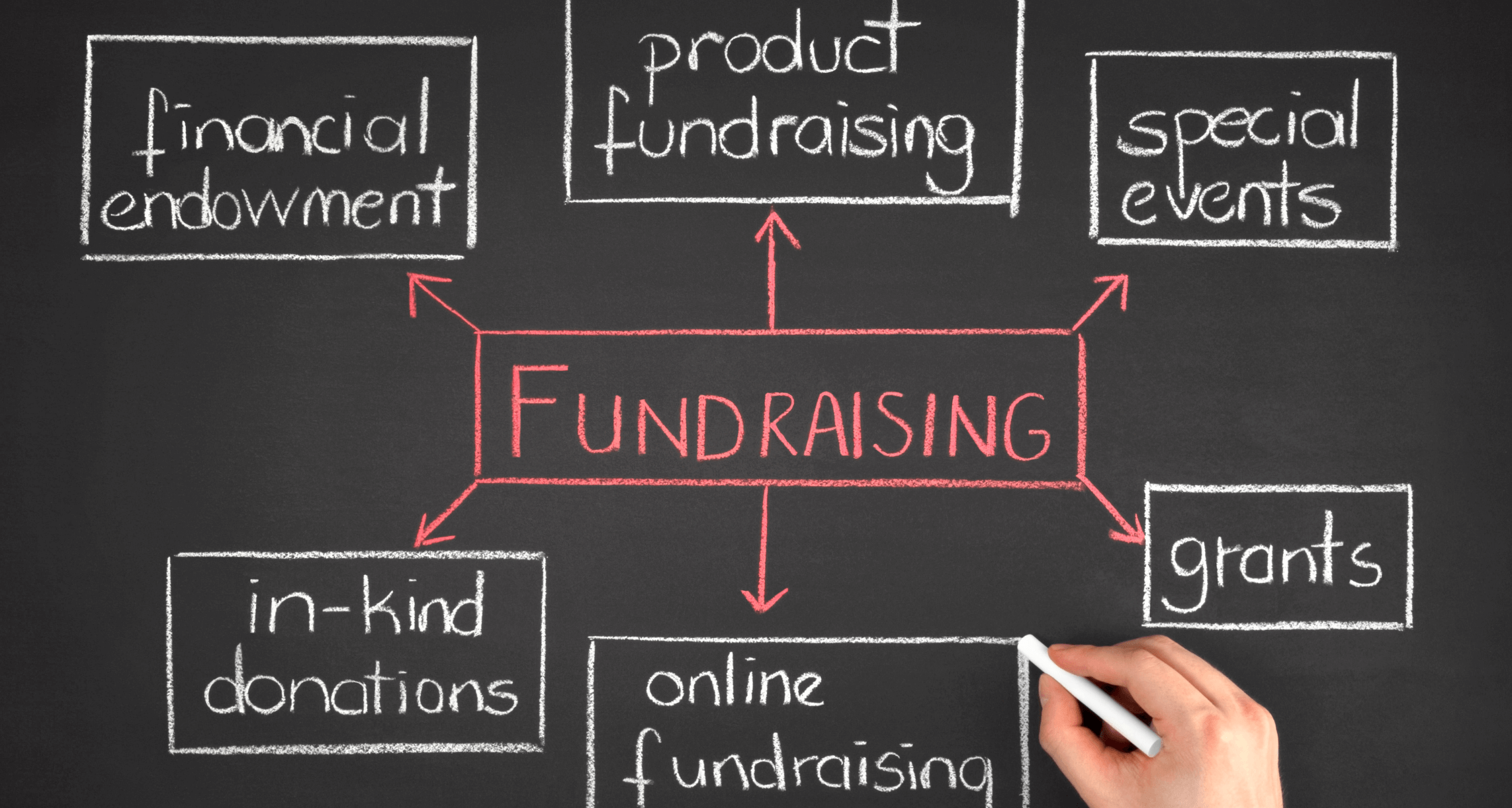New Fundraising Email Benchmarks Reveal Exciting Insights for Small Nonprofits
New Fundraising Email Benchmarks Reveal Exciting Insights for Small Nonprofits
Where do you get your nonprofit marketing best practices, statistics, and metrics? If you’re like many fundraisers, you pull from several different sources. And, since for-profit organizations spend a lot of time and money researching buying behavior and consumer trends, their research probably impacts how you structure your own programs.
This is especially true if you find yourself looking for email marketing best practices: Most of the available information about nonprofit email performance comes from a small handful of very large organizations. If you work for a smaller organization, that can make it difficult to tell if you’re performing well.
That’s why the release of The Nonprofit Email Report: Data-Backed Insights for Better Engagement was so exciting. It’s full of nonprofit-specific data about email marketing and fundraising. And, as it spotlights unique data for small and large nonprofits alike, it reveals that small nonprofits are doing a remarkable job of communicating with their audiences—and they’re outperforming those large organizations in some significant ways.
New Data, New Email Fundraising Benchmarks
If you send email appeals, keeping an eye on those campaign results can give you really valuable insight into the types of stories and asks that appeal to your donors. While it’s most valuable to track your own results over time, industry standards can set a useful baseline.
The following benchmarks come from The Nonprofit Email Report, and they include data specifically for small and large organizations. For the purposes of this study, “Small” nonprofits are organizations that have between 250 and 999 contacts on their lists. “Large” organizations have lists that contain 1,000 or more contacts.
Average Amount Raised per Nonprofit Email Campaign
To set these fundraising email benchmarks, we looked at results from the four biggest giving days of 2022: GivingTuesday and the last three days of December. We found that the average nonprofit raised $5,598.51 per campaign. Large organizations raised $6,513.41 per campaign while small organizations raised an average of $3,522.54.
A Couple of Caveats
The data set included in this research included more than 37,000 different campaigns. We wanted to focus specifically on fundraising campaigns, but we didn’t have a surefire way of entirely eliminating non-fundraising emails like newsletters and impact updates.
To get as close as we could, we looked at email campaigns sent during those very high-volume fundraising days and how they impacted fundraising. Because those fundraising averages represent the results of very big giving days, your fundraising campaigns during other parts of the year may not match those results. And that’s okay! The appeals you send this spring are probably not as “successful” as the ones you’ll send on GivingTuesday or during the end of the year. As long as you’re seeing incremental progress—or, at the very least—seeing steady results, you’re doing fine.
What Does This Email Fundraising Benchmark Mean?
These benchmarks will be most helpful for fundraisers who want to evaluate their own fundraising results, especially at the end of the year. If your year-end fundraising results mirror these averages, great! If they don’t, compare your 2022 year-end appeals to the ones you sent during 2021. Did you see any improvement? Excellent. Did you see a decrease? That’s useful information, too! Use that as a prompt to revisit your strategy this year.
When you first glance at these benchmarks, how do you feel? It seems like large nonprofits out-perform their smaller counterparts, right? Their overall fundraising totals were higher, after all. But, when we took a closer look at the data, we found something wonderful.

This Email Fundraising Benchmark Should Thrill Small Nonprofits
Fundraising totals are a great metric to use as you evaluate your fundraising email programs. They give you insight into how well your story and your appeal landed with your base of supporters. But another metric—the average amount raised per contact—can give you even deeper insight into how your appeal resonated with your audience. It’s here that small nonprofits’ ability to inspire generosity really shines.
When we looked at all nonprofits together, the average organization raised $1.11 per contact on their list. Small organizations raised an average of $6.15 per person, while large organizations raised around $0.88.
What Does This Mean?
Small nonprofits may not have raised as much per email campaign, but they raised more per contact. If you’re a fundraiser and feel pressure to hit the same fundraising totals as larger nonprofits, take a look at your average amount raised per contact. It’s a great indicator of how well you’re reaching your supporters and how effective your appeals are at inspiring them to give generously. Higher overall fundraising totals aren’t the #1 indicator of how well you’re doing: The big nonprofit up the street may raise more than you, yes. If you’re working with a much smaller list, it will be much harder for you to hit the same fundraising totals they do. But your donors may be giving more on average, and that’s something to be proud of.
You can take it a step further by looking at your average amount raised per contact through some other lenses. Try:
- Looking at your average raised for different segments: Which segments give most generously? Which segments tend to give less? How can you adjust your appeals to be more appropriate for those different segments? Should you change your communications tactics for different groups of people?
- Comparing the average amount raised for different campaigns: What appeals raised the most per contact? Which raised the least? What can you tell about your donors, their motivations, and their preferences? How can you apply those lessons to future appeals?
- A/B testing different versions of the same appeal to get a feel for which types of campaigns are most effective. Do your donors respond more strongly to one type of story over another? Do shorter appeals prompt more donations than long ones? Which calls to action is most compelling to your audience?
The amount raised per contact is an invaluable email fundraising benchmark. Do you track yours?

How to Calculate Your Average Amount Raised per Contact
If you want to track your own, the formula is simple: Simply divide the amount raised as a result of your campaign by the number of people who received your email. If you sent your campaign to 850 people and raised $4,000, you raised an average of $4.71 per contact.
What to Do If You Want to Improve Your Amount Raised per Contact
As you evaluate your campaign performance, don’t panic if you notice your numbers don’t match industry fundraising email benchmarks. Okay? That’s important. Instead of getting discouraged or feeling bad, look at it as an opportunity to find ways to improve your campaigns. Benchmarks should never be a cudgel you use to beat yourself up: They should be a motivator!
If you want to work on improving your email fundraising performance, here are three steps you can take.
Appeal to Your Donors’ Identities
Giving to a nonprofit is a personal decision that’s driven by lots of different motivations. But, whatever that driver is—whether it’s because they’ve benefitted from work like yours themselves or simply want to make a small difference in their community—it’s almost certainly deeply tied to a donor’s sense of self. Resist the temptation to make your appeal logical to the point of eliminating emotion! When you write your next appeal, appeal to your audiences’ identity. Reference someone’s kindness, generosity, or enthusiasm for your cause.
A simple example would be writing something like, “Success stories like these are only possible because of the kindness and generosity of our community. Will you help others succeed by making a gift today?” You’re indirectly speaking to a donor’s identity as a kind, generous person—and that’s very compelling.
Make Sure You Actually Ask
When you write an appeal, you know it’s an appeal. You know that the end goal of your email is to inspire someone to make a donation. And, when you’re deeply immersed in telling a compelling story, it’s easy to assume that everyone else will know you want them to donate. Make sure you actually ask! Don’t simply tell a compelling story and drop a link to your donation form—include an explicit call to action. Ask someone to “Make a donation” or “Give today.” By the end of your email, every reader should know exactly what you want them to do.
Make It Easy to Act
After you’ve made a specific appeal, make sure it’s easy to respond to that ask. This means making it very easy to get to your donation form and make a gift. Here are some simple strategies that will help:
- Link to your form multiple times. If someone reads a paragraph that hits them hard, don’t make them scroll up or down to find a link to your form!
- As you link to your form, do so using a mix of buttons, linked images, and text hyperlinks. This will make it easier for you to give your readers lots of opportunities to navigate to your donation form without getting repetitive.
- Make sure your links are easy to click, especially on mobile. According to HubSpot, 41% of emails were accessed on mobile devices in 2021. Some sources put that percentage as high as 81%! Though that’s a humorously wide range, both figures reiterate that emails must be easy to engage with on mobile devices.
- Double-check your donation forms. Clunky, awkward forms that cause a lot of friction will dampen the enthusiasm of even the most engaged potential donor. An easy way to get a feel for the efficacy of your donation form is to compare the number of clicks to your donation form and the number of gifts made on that page. If you get lots of clicks but few donations, something’s disrupting your audiences’ decision to give. Make a gift yourself and see where you get stuck, confused, or frustrated.
As you adjust your tactics, keep an eye on your email fundraising performance benchmarks over time. You’ll quickly notice what works, what doesn’t, and which strategies you can apply to future email campaigns.
Whether You’re a Large or Small Nonprofit, Track Your Fundraising Email Benchmarks
All nonprofits—regardless of size—will benefit from keeping a close eye on their fundraising email results and their progress over time. As you track your own performance, remember that industry benchmarks, while useful, are guidelines. Seeing incremental improvements in your organization’s campaigns is much more valuable than measuring up to industry averages.
If you’re a small nonprofit that feels pressure to perform at the same level as larger organizations with bigger lists, be encouraged! Even if you’re not hitting the same numbers as big charities, you’re probably doing a wonderful job engaging your existing donors and inspiring them to give generously. Keep an eye on your fundraising email benchmarks—particularly your average amount raised per email contact—and look for areas you can improve to get even better results.
Looking for more information on industry email benchmarks (and more areas where small nonprofits really shine)? Download your copy of The Nonprofit Email Report: Data-Backed Insights for Better Engagement!

The post New Fundraising Email Benchmarks Reveal Exciting Insights for Small Nonprofits appeared first on Nonprofit Hub.









Leave a Reply